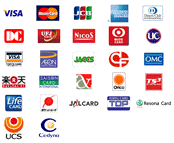IT managers often expect support to collect all requests and process them in a timely manner so that a solution can be delivered as quickly as possible. Typically, this expectation is met by the support service provider. But what if employees complain about too long support times or downtime? Unless there is explicit regulation, the IT manager has his hands tied when it comes to intervening. In case of error, tickets can often degenerate, then emotions quickly bubble. It is therefore all the more important to identify measurable KPIs that you can use to assess the quality of the activities provided. Depending on the performance, different KPIs are more suitable. SLAs are usually part of a contract between a customer and a service provider. It is therefore always advisable to set the TARGET status and save it in writing so that it can be compared to the current situation. Service level agreements specify exactly what is expected and what the consequences will be if the agreements are not respected. The supplement specifies additional product-specific terms, contains additional information about usage metrics, and describes several cloud services in a supplement. For example, you could have defined the following SLA levels For example: In SLAs, we talk about so-called service times. These are not only opening hours, but also, if necessary, extended operating hours that go beyond the usual hours from 9:00 to 05:00.
What about weekends, holidays or the night? Do you need reliable support even in these times? Be sure to record such things and also consider the different time zones if you operate internationally. Therefore, take the time to define the requirements and guidelines with your service provider. Because then both parties know the expectations and can react accordingly. Measure the results and KPIs defined at regular intervals and contact your provider in time in case of discrepancies. On the one hand, you avoid contractual troubles and penalties and, on the other hand, you ensure that the cooperation is satisfactory for both parties involved. SLAs are service level agreements for the processing of banknotes by the market. SLA stands for Service Level Agreement. This is the service contract between a company and a service provider. For example, an IT organization that provides support for SAP/other software/hardware has an agreement. This can be classified e.B. according to the criticality of the incident. A high-priority incident must be resolved within 10 hours.
A medium priority incident has a 3-day delay to resolve it, etc. The General Terms and Conditions of Sale (GTC) describe the essential legal provisions that apply to the chosen cloud service, including rights of use, customer data, guarantees, confidentiality and limitations of liability. Service level agreements are as individual as the service itself. Nevertheless, some key points should be noted, which we would like to explain to you in more detail below. SAP makes the cloud service available to all customers in a consistent manner. Learn about product-specific terms, support strategy, and cloud service operational availability. If you have any questions about SLAs, please do not hesitate to contact us. We will be happy to assist you and formulate appropriate service level agreements with you. The purchase order is your order document to subscribe to SAP Business Cloud Services. It defines the commercial conditions and determines the structure of the contract. At the 1st level, the number of calls answered in a given period of time is often defined as a KPI.
The 2nd level is usually judged on the basis of the settlement rate, i.e. how many problems have already been solved. Make sure the KPIs meet your needs. At the request of the processor processing the personal data uploaded to the cloud service, SAP implements and maintains technical and organizational measures to properly protect the personal data. These are defined in the preparation phase of the project and the customer would have concluded an agreement with the company on the level of service. SLAs are applicable in production and maintenance support projects. For example, if your business follows a ticketing process (a ticket is nothing more than an environment that includes a full description of the problem, which includes a brief description, a problem, customer contact information, screenshots of the error, etc.) and for each ticket, there is a severity level, e.B. critical business issues or issues can be treated as high or highest severity. .
. .













